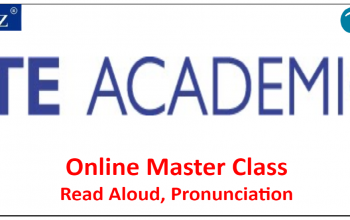Describe Image is a very important item type in PTE. Generally, they are 6-7 repetition of this item type. They are extremely scoring and are very easy to score. It contributes solely to your speaking score which includes the content, pronunciation, and oral fluency. You will have 25 seconds to prepare and 40 seconds to respond to each task.
Each Describe image is of 15 marks as under:
Content – 5
Pronunciation – 5
Oral Fluency – 5
There are 5 types of Describe Images typically show in the PTE Academic Test.
- Bar Chart
- Pie Chart
- Line Chart
- Table
- Others – Flow Chart, Map, Mixed Chart, Picture, etc.
1. Templates for Bar Chart
First of all, the bar chart is the best type to practice your Describe Image task with templates. Because it provides all of the factors clearly and logically. These factors include the topic, figures, differences or similarities, and so on.
- The bar chart represents/shows/reveals the information about (TOPIC/ TITLE) and (CATEGORIES IN THE BAR CHART)…
- It can be seen from the chart, that the highest figure is (FIGURE) which is (NAME OF CATEGORY), following by (NAME OF CATEGORY)…
- However/On the contrary, the lowest figure is (FIGURE) which is (NAME)…
- In conclusion, it can be seen that (TREND/HIGHEST/LOWEST/SILIMARITY/DIFFERENCE)…
2. Templates for Pie Chart
This is similar to the bar chart, you can simply mention the highest and lowest figures and any other important features (similarity/ difference) that show in the pie chart.
- The Pie chart reveals (TITLE) and (CATEGORIES) …
- It can be observed that (NAME OF CATEGORY) is the highest, followed by (NAME OF NEXT HIGHEST CATEGORY)
- The lowest (CATEGORY WHICH IS THE LOWEST)
- Overall, it can be observed that (TREND/HIGHEST/LOWEST/SILIMARITY/DIFFERENCE)…
3. Templates for Line Chart
Line charts are developed on XY Axis and are easy to understand as we have been doing them since our school days.
These sentences may be helpful when you describe a trend.
“The figures increased sharply to reach a peak of ……”
“The number gradually fell to reach a low of ……”
“The figures variates between …… and …….”
“It steadily rose, peaking at ……”
“After several fluctuations, it touched a peak/low of ……”
“The number eventually decreased/increased to ……”
- The line chart describes information about (TOPIC/ TITLE).
- The highest figure in (NAME) is at (FIGURE), and it gradually declined/increased to reach a low/high of ((FIGURE).
- On the contrary, the lowest figure in (NAME) is at (FIGURE), and it gradually rose/dropped to (FIGURE).
- In conclusion, it can be seen that (TREND/HIGHEST/LOWEST/DIFFERENCE/SIMILARITY).
4. Templates for Tables
In this type, it is unnecessary to describe all of the figures in the table. The tables can be huge or can be small. If it is a large table, do not explain everything. On the contrary, if it is small, explain everything.
- The table provides important information about (TOPIC/TITLE).
- As we can see from the table, there are several figures in terms of (ELEMENT A), (ELEMENT B), (ELEMENT C)… …
- The highest figure is (FIGURE) which is (NAME), while the lowest figure is (FIGURE) which is (NAME).
- Moreover, from (TIME) to (TIME), the figure of (NAME) was increased/decreased significantly/gradually.
- In conclusion, it can be said that (TREND).
5. Templates for Flow Chart, Map, Mixed Chart, and Picture
This 5th category type requires describing a process, map, image etc. Therefore, you need to master vocabularies regarding some changes such as “develop”, “convert”, “transform”, and “turn into”. This task is sometimes tricky because there are too many or few processes to describe for 40 seconds. The core part to complete this type of task is that cut off or add more details from the provided flow chart.
- The flowchart/ diagram/image gives the picture/process/ life cycle of (TOPIC/TITLE).
- There are various steps/stages in the flow chart…
- Initially/ in the first step/stage, (THE FIRST PROCESS)…
- Moreover, it is transformed/converted into (THE SECOND PROCESS)…
- In the next step/stage, it is further developed/turns into (THE THIRD PROCESS)…
- Finally, (THE FINAL PROCESS)…
- The map provides information about (TOPIC/TITLE).
- There are various places described in the map such as (PLACE NAMES).
- Initially, in the north, (FACTS/ELEMENTS).
- Moreover, in the middle part of the map, (FACTS/ELEMENTS).
- Lastly, in the south, (FACTS/ELEMENTS).
- In conclusion, (FACTS/TREND)



